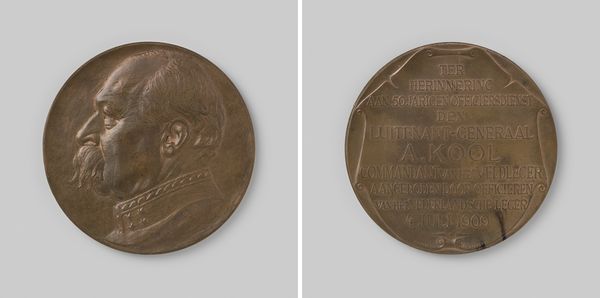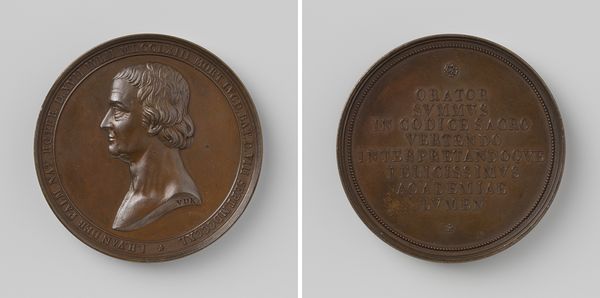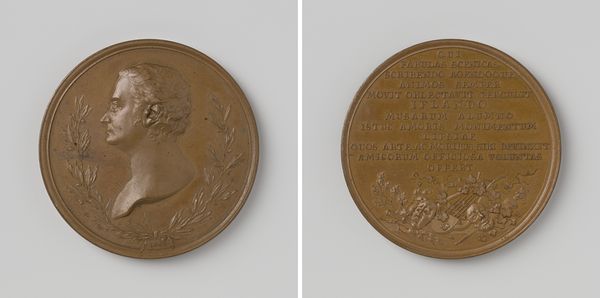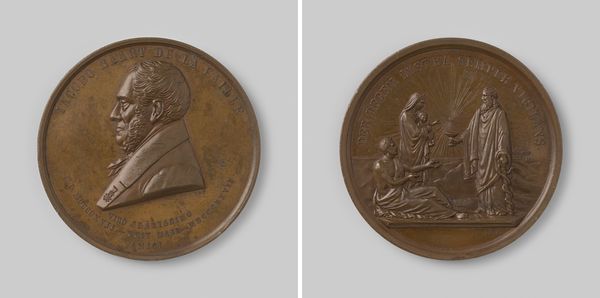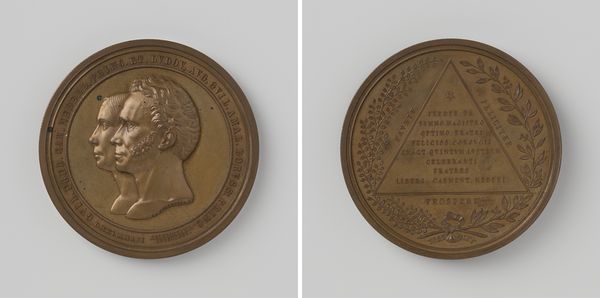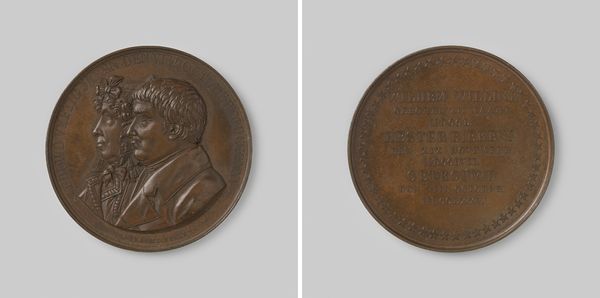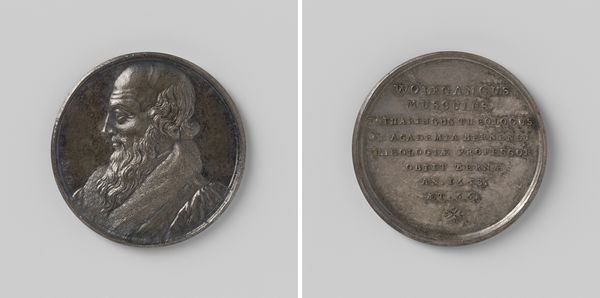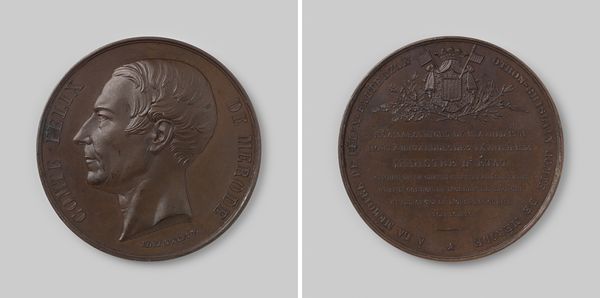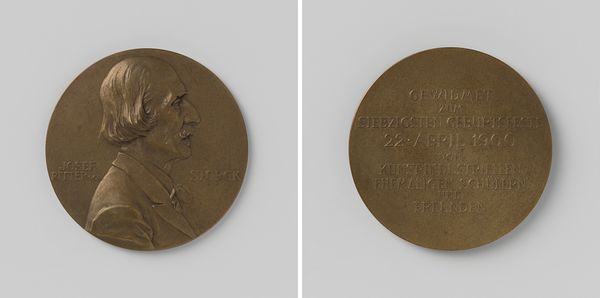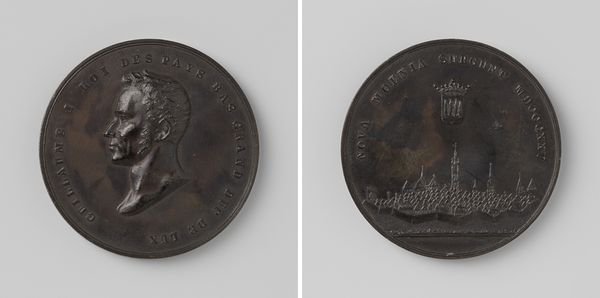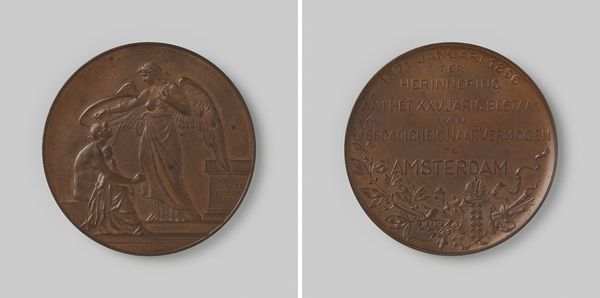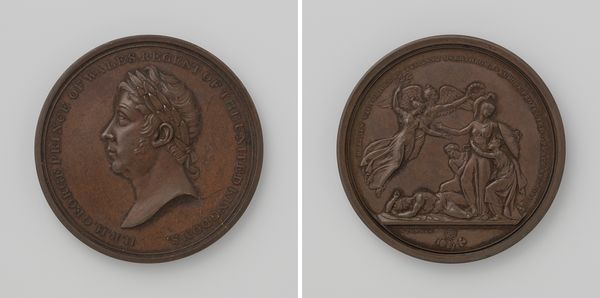
metal, relief, bronze, sculpture
#
portrait
#
metal
#
relief
#
german-expressionism
#
bronze
#
sculpture
#
academic-art
#
statue
Dimensions: diameter 4.2 cm, weight 30.27 gr
Copyright: Rijks Museum: Open Domain
Editor: This is a bronze relief, "Overlijden van Karl August van Saksen Weimar Eisenach 1894" by W. (I) Mayer. It's quite striking how a solemn occasion like death is captured on what seems like a commemorative medal. How would you interpret this work within its historical context? Curator: It’s interesting you see it as solemn. I would note the tradition of memorializing prominent figures through medals had a long history, but really became important for communicating state power, particularly as newly unified nations like Germany looked to create symbolic connections. Think about how Kaiser Wilhelm I and Bismarck used imagery to forge a sense of national identity. What’s depicted on the other side? Editor: On the reverse, there's an inscription along with a laurel or palm branch. Curator: Precisely. The inclusion of these inscriptions—"Karl August, Grand Duke of Saxe-Weimar-Eisenach"—transforms this piece beyond mere memorial into something charged with the political ambitions of that particular territory. How do you think its display would impact perceptions of the region? Editor: It strikes me that creating such a detailed relief in bronze feels almost… ostentatious for a memorial. Surely other, more accessible forms were available? Curator: Absolutely. Bronze suggests permanence, authority. Think of the messages being sent by its materiality, the scale of distribution... Even its survival across generations shapes the way Karl August is remembered and understood today. What message does it give to those excluded from its production or distribution? Editor: It emphasizes a hierarchy, then. Creating something like this serves as a reminder of who held the power and means. Thanks, that’s very illuminating! Curator: My pleasure! It highlights how objects, even seemingly simple medals, play a vital role in the continuous negotiation of historical memory and political power.
Comments
No comments
Be the first to comment and join the conversation on the ultimate creative platform.
